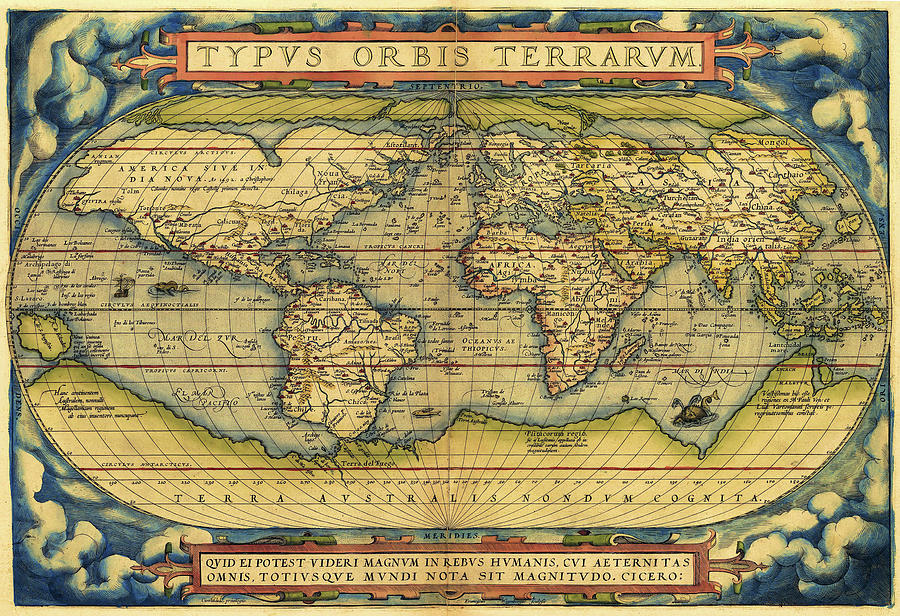
Nova Francia is shown, although the map debuted well before the visits of Champlain and the Jesuits. Lawrence reaching to the middle of the continent and a similar river running from the Gulf of Mexico to the same vicinity. North America is a study in guesswork and mythical cartography, including a projection of the St. The early mis-projection of Japan is prominent, as is the equally conjectural depiction of New Guinea and the Solomon Islands. The map includes a massive Terra Australis Nondum Cognita, a distinctive Northwest Passage below the Terra Septemtrionalis Incognita, and other early cartographic hypotheses. Abraham Ortelius (1527-1598) included the work as the first map in his atlas and it went through three editions in the later sixteenth century. One of the most famous world maps ever made, "Typus Orbis Terrarum" featured in the world's first atlas, Theatrum Orbis Terrarum. Latin Note in the Margins, including a reference to Amerigo Vespucci, the mythical Fortunate Islands and the Antarctic Region
#Abraham ortelius map full
In 1568 the production of individual maps for his atlas Theatrum Orbis Terrarum was already in full swing. In 1565 he published a map of Egypt and a map of the Holy Land, a large map of Asia followed.

The inspiration for this map may well have been Gastaldi's large world map. In 1564 he published his first map, a large and ambitious world wall map. In addition, he travelled a lot and visited Italy and France, made contacts everywhere with scholars and editors, and maintained extensive correspondence with them. Luke as an "illuminator of maps." Besides colouring maps, Ortelius was a dealer in antiques, coins, maps, and books, with the book and map trade gradually becoming his primary occupation.īusiness went well because his means permitted him to start an extensive collection of medals, coins, antiques, and a library of many volumes. He learned Latin and studied Greek and mathematics.Ībraham and his sisters Anne and Elizabeth took up map colouring. The maker of the 'first atlas', the Theatrum Orbis Terrarum (1570), was born on 4 April 1527 into an old Antwerp family.

There is also a prudent comment adjacent to New Guinea querying whether this large island is part of the southern continent or not. South America retains the unusual bulged south-west coast drawn by Mercator.

From surviving correspondence it is known that Mercator generously encouraged Ortelius to make use of his published corpus of research he also provided him with co-ordinates of places in America and perhaps elsewhere.
#Abraham ortelius map crack
Early issue of Ortelius' world map (before the crack of c.1576), based on Mercator's large world map of 1569.


 0 kommentar(er)
0 kommentar(er)
